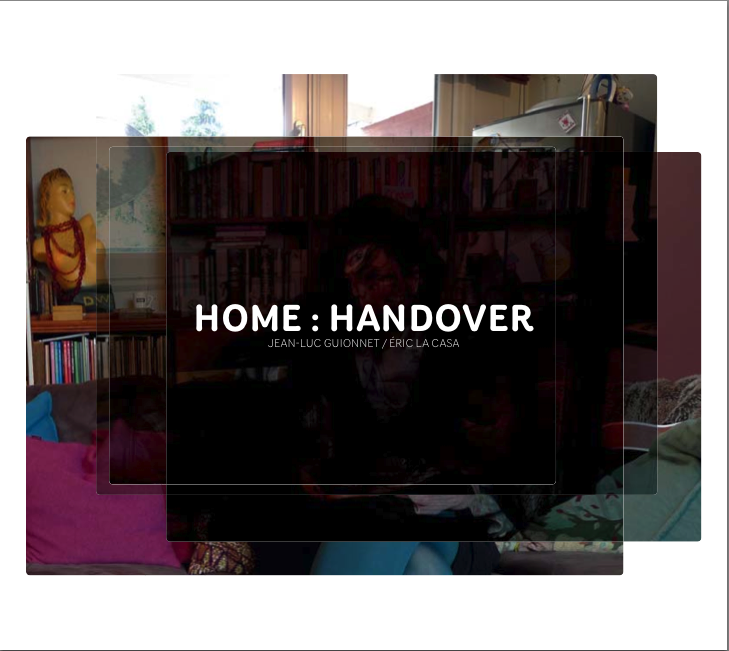
 |
|
 |
Format: 4 x CD Label & Cat.Number: Potlach P314 Release Year: 2014 Note: for the UNINSTAL festival in Glasgow (Scotland), both sound artists were invited to record local citizens in their homes, talking about their environment and playing their favourite music, to design afterwards a composition after a pre-defined score which was presented live with a bunch of musicians; for a final studio mix another recording of a musician listening to the original recordings was incorporated too: very obscure intimate stuff, feat. KEITH BEATTIE, LUCIO CAPECE, NEIL DAVIDSON, etc.
Price (incl. 19% VAT): €30.00 Warning: Currently we do not have this album in stock!
More InfoIn 2010, Jean-Luc Guionnet and Йric La Casa were invited by Arika to the Uninstal festival in Glasgow (Scotland) to carry out a series of recordings with some inhabitants of this city, in their home spaces.Based on predefined rules, including the single-sequence shot as a recording method, these people became the actors in a story about their everyday life. Guionnet and La Casa considered this work as a composition under the form of a score with four phases. 1st phase: APARTMENT Recording of Apartment I II III IV Lisa Peebles, Tim Nunn, Zoe Strachan and Silvia Sellitto 2nd phase: CONCERT Public interpretation of Apartment I II III IV at Tramway (2010). Voices: Aileen Campbell, Gael Leveugle. Musicians: Lucio Capece, Neil Davidson and Seijiro Murayama. 3rd phase: HOUSE Domestic interpretation of Apartment I II III IV Keith Beattie, in his house. 4th phase: SYNTHESIS Mixing of Phases 1 2 3 of each Apartment This process was carried out four times and results in a 4xCD boxset. www.potlatch.fr An ambitious project indeed. Commissioned by Arika in Glasgow, Guionnet and La Casa were asked to invent a work involving local citizens. The pair recorded four different individuals in their respective homes, listening to music and talking about their environment. Their choices of music and comments about their homes are lively insights into other listenings. These recordings were then re-interpreted in a live concert by a quintet of musicians and speakers listening on headphones. A third set of recordings was made by a musician at home, also listening to the original four participants. The three sets of recordings were then mixed into four pieces of colliding perspectives. It's actually simpler than I've made it sound, and surprisingly engaging given its sprawling mass. Interesting that they chose to include the entire process. It can be difficult to parse what's being said at times, given the thick brogue delivered by some of the Glaswegian speakers. To American ears this comes off as gently humorous, setting up a nice perspective from which to experience what follows. During the concert segments, Lucio Capece, Seijiro Murayama and Neil Davidson play around with, or on top of, a recording (which we have only heard previously) while Gael Leveugle and Aileen Campbell repeat spoken passages or comment on the sounds heard. Keith Beattie then offers his personal response to the recordings, playing guitar and piano and then commenting on what he played and why. This work gives us a unique look into the way different individuals work with or think about or interpret sound in various environments and contexts. Far from a dry academic exercise, it is quite often light hearted and funny, and I can easily see these practices engaged in elsewhere, in listening workshops or perhaps as music therapy. The final four collages, each made from the bits of one participant's original recordings and subsequent re-interpretations, are engaging in several ways. They resemble early Hafler Trio records with their mixture of enigmatic speech and processed sound bites. And as we've presumably been through the material, having listened to everything that came before, memory is enlisted and sometimes taxed, along with our pondering what or why. A weighty package this. Four CDs of interesting and intriguing work, giving an example of how listening practices can be set up and then assembled for mass investigation. Bravo. Jeph Jerman l The Squid's Ear l November 2015 |
| © 2007 Drone Records | | Celler Strasse 33, 28205 Bremen, Germany | Privacy and cookies policy | Impressum / Allgemeine Geschaftsbedingungen / Haftungsausschluss | Links to the scene |